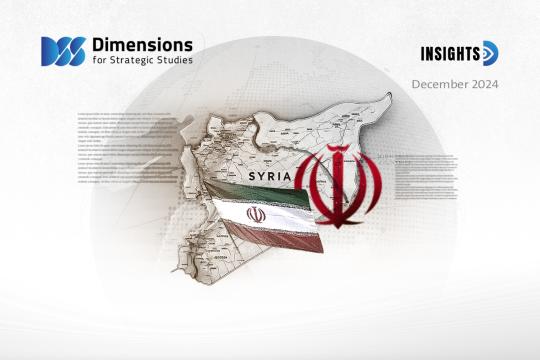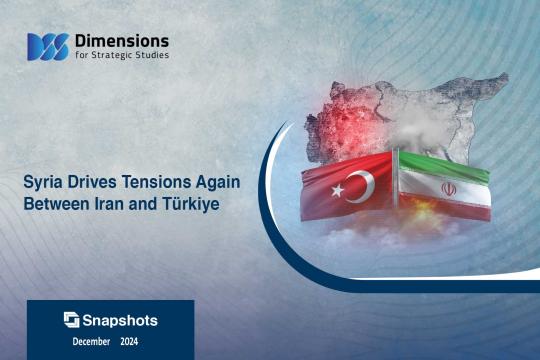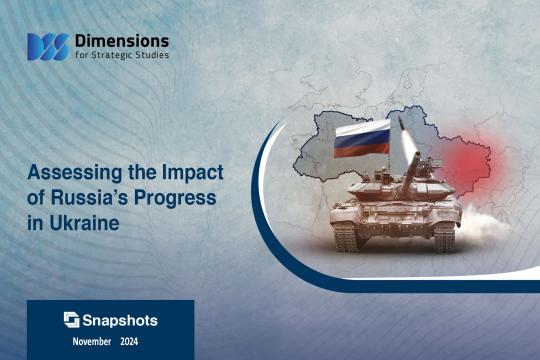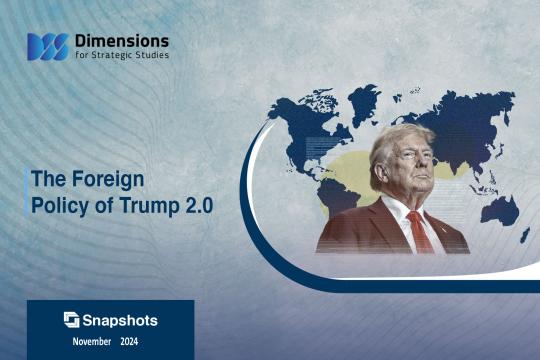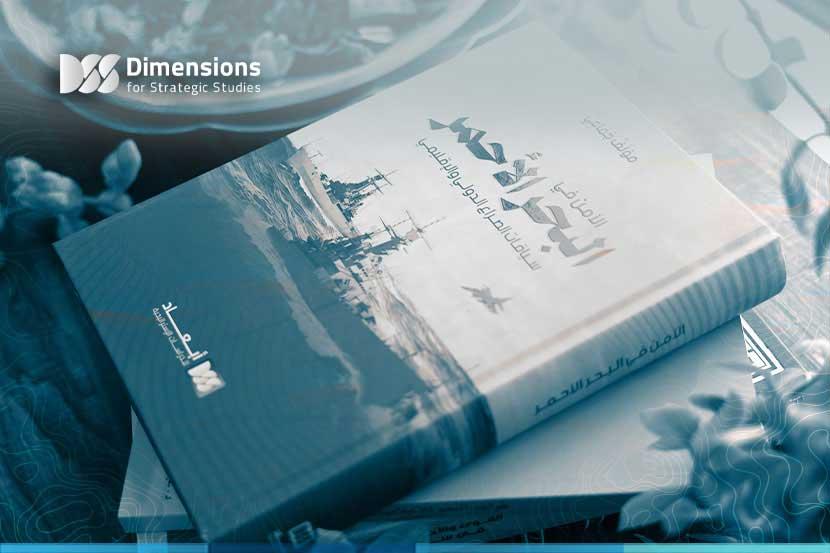
Understanding Red Sea Security in the International Context
2024-07-186072 view
Back-to-back global crises have sharply highlighted the strategic importance of the Red Sea in recent years. The coronavirus pandemic and the resulting movement restrictions, Russia’s invasion of Ukraine, the war in Gaza and ensuing attacks on Red Sea shipping by the Houthi movement in Yemen, which have forced many ships to change course via the Cape of Good Hope: all these developments have led to bottlenecks in supply and production chains, adding to global inflation woes.
Given the region’s exceptional strategic importance, Dimensions for Strategic Studies has chosen the region as the topic of its first book. “Security in the Red Sea: The Contexts of the International and Regional Conflict,” a 470-page volume released in January 2024, comprises 10 chapters by experts and academics mainly hailing from countries neighboring or close to the Red Sea. As such, it represents an attempt to promote local expertise and propose realistic, practical policies to build a better future for the region and its people, as well as other stakeholders.
It includes an introduction by His Excellency Dr. Abdullah Al-Ashaal, a veteran Egyptian diplomat and former Assistant Minister of Foreign Affairs.
The book aims to provide an objective overview of recent developments in the Red Sea region and the Horn of Africa, an area prey to intense regional and international rivalries. It examines the many manifestations of military, economic and political competition, proposing strategies for future coexistence. The authors examine how the region can become an arena of cooperation between both local states and world powers, rather than continuing to witness regional and international rivalry and conflict through the means of military hegemony and political and economic influence.
The Center believes this vision can be achieved through cooperation over the common goals of economic growth, political stability and social development, in order to liberate the region from poverty, wars and conflicts. Efforts to reach this goal must take advantage of the region’s strategic location, natural and human resources as assets for development and cooperation, rather than leaving the region as the scene of destructive competition between regional and international powers. This would ensure a better future for the Red Sea and its peoples, as well as promoting global trade and serving the interests of regional and international stakeholders.
Summary of Chapters
The book starts by laying out a theoretical framework for understanding Red Sea security. Dr. Yahya Amer Haj’s essay “The Red Sea: An Overview of its Geographical Location and Strategic Importance,” discusses the waterway’s historical importance, highlighting its ecological wealth, mineral resources and unexploited natural treasures as well as the contributions of the peoples and civilizations along its shores. Dr. Abd al-Rahman Abu Khris then offers a theoretical introduction to key theoretical, conceptual and methodological frameworks for Red Sea security, in the context of international relations.
Next, Dr Muharrem Hilmi Özev offers a comparative analysis of the challenges facing regional security, as well as trends in international competition in the Red Sea between the United States and the European Union. He argues that the U.S. is primarily interested in keeping global trade corridors open while fighting piracy and terrorism, whereas the EU sees the region through the lens of collective European security, aiming primarily to secure the global flow of goods, especially oil and gas.
In the following chapter, Dr. Elsadig Elfaqih discusses the security policies of individual Red Sea countries, suggesting that collective security initiatives can act as an alternative to national policies in conceptions of the regional power structure. He concludes that regional and international initiatives have succeeded in establishing multilateral structures that aim—in principle—at securing the geopolitical, strategic, economic and environmental security of the Red Sea. However, he argues that these must be strengthened and developed if they are to be effective and become a springboard for broader cooperation.
The phenomenon of non-state actors is the topic of the next chapter, by Dr. Ali Al-Dahab. He addresses the issue of violent armed groups and their connection to transnational organized crime in the Red Sea region. He lays out several reasons for the rise of such organized crime, such as conflicts, political unrest, a lack of democracy, and foreign interventions. He predicts that further hotbeds of tension and conflict are likely to emerge in the region, necessitating far more serious efforts to address their root causes.
The book also addresses the influence of Gulf states and Israel in the Horn of Africa and the Red Sea. Dr. Nagla Marie discusses how regional competition threatens the security and stability of the region. Continuing with the theme of international competition, Buthaina Al-Zawahra discusses the respective roles of Russia and China in the Red Sea, noting that both countries are seeking to maintain a limited presence there in order to serve their vital interests. She argues for policies of containment and of political and economic partnership in order to avoid polarization and a one-dimensional focus on conflict prevention.
Kaan Devecioğlu then offers insights into the rivalry between Türkiye and Iran in the Red Sea, revealing their motives for seeking influence in the region, and the repercussions of their respective policies for the security and stability of the Red Sea. Dr. Gamal Gasim then sheds light on political developments in Yemen as concerns Red Sea security and how these dynamics have shifted over time.
In the final chapter, Dr. Madoukh Al-Otaibi presents a vision for the future of security in the Red Sea and stability in the Horn of Africa. He highlights the nature of competition and threats between regional and international powers in the region, emphasizing the need for cooperative frameworks such as multilateral agreements and regional and international mechanisms to enhance the security of the Red Sea and develop its resources.
“Security in the Red Sea: The Contexts of the International and Regional Conflict” presents a unique analytical view of the various dimensions and motives for competition and conflict in the Red Sea region, addressing the positions of all regional, international and local actors. Through deep analysis, it proposes paths for cooperation among various stakeholders. Finally, it argues that achieving this requires cumulative efforts over the long term. No actor in the region has a magic wand that can bring about solutions overnight.


